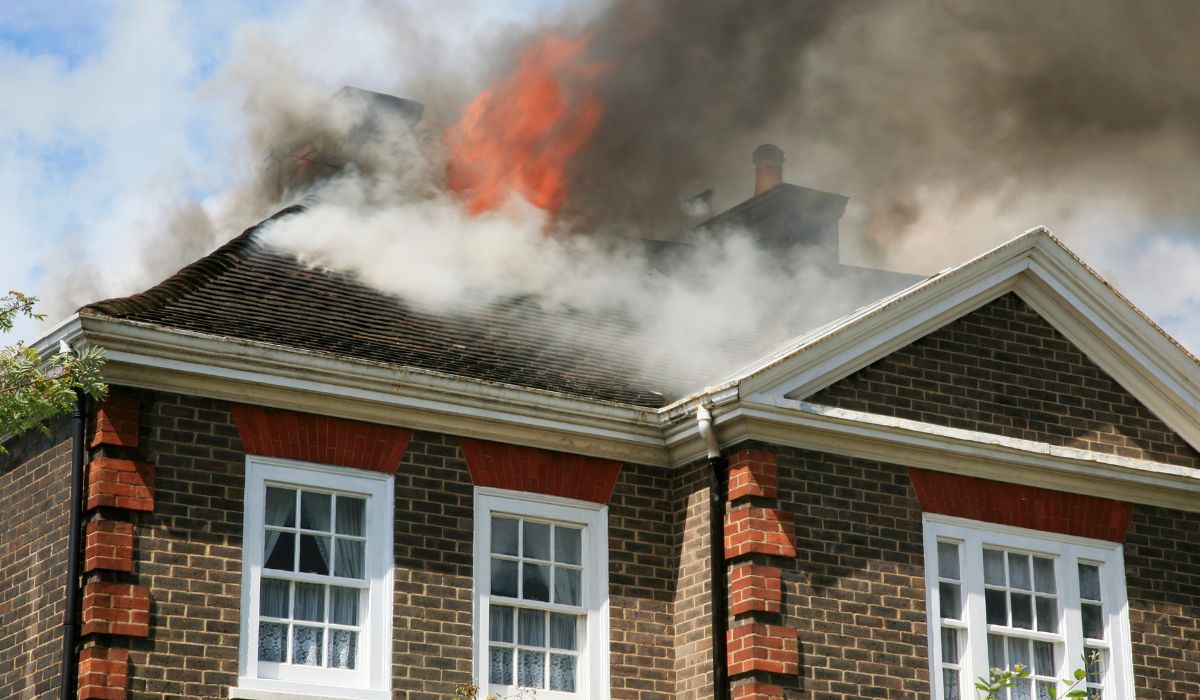How Fast You Need to Act After a House Fire
When a house fire happens, every second matters. The faster you act, the more you can save — your home, your belongings, and your health. Even after the flames are out, danger can still be present. Acting quickly can reduce fire damage, prevent mold and water damage, and make sure your family stays safe.
This guide will help you understand why quick action after a fire is so important and what steps to take right away.
Why Time Matters After a House Fire
After a fire, many homeowners think the danger is over once the firefighter leaves. But in reality, the clock starts ticking the moment the fire department puts out the flames. Smoke, soot, water, and toxic gases begin to damage your home and belongings almost immediately.

The First 24 Hours Are Critical
Within the first day:
- Soot and smoke can stain walls, floors, and glass surfaces.
- Odors from burned materials spread through your house.
- Moisture from firefighting can lead to mold growth within 48 hours.
- Electrical systems and carbon monoxide can create new safety risks.
That’s why calling a fire damage restoration company as soon as possible is key. Professional restoration teams have the tools and personal protective equipment (PPE) needed to safely clean, dry, and restore your property.
Step 1: Make Sure Everyone Is Safe
Your safety comes first. Before thinking about cleaning or repairing anything, make sure your family and pets are safe.
- Don’t go back inside until the fire department says it’s safe.
- Watch out for weak structures, like cracked walls or sagging ceilings.
- If you smell gas or see exposed electricity, leave the area and call for help.
- Wear personal protective equipment, like gloves, masks, and boots, if entering the home.
The American Red Cross often helps families after disasters. They can provide food, clothing, and temporary shelter if your home isn’t livable.
Step 2: Contact Your Insurance Company
Once everyone is safe, contact your insurance company right away. The faster you call, the quicker the claim process can begin.
Things to Do When Calling Insurance
- Report the fire and describe the damage briefly.
- Ask if they can recommend a fire damage restoration service.
- Request guidance on how to make an inventory of your damaged items.
- Take photos or videos of everything before cleaning or removing anything.
Your insurance policy may cover cleanup, temporary housing, and restoration services. Always confirm what your coverage includes.
Step 3: Call a Fire Damage Restoration Company
Professional restoration services specialize in helping families recover from fires. These experts handle:
- Smoke and odor removal
- Soot and debris cleanup
- Water extraction and drying
- Mold prevention
- Structural inspection and repairs
Hiring a certified company ensures your home is cleaned and restored properly. They use industrial-grade drying equipment to remove water left by firefighters and prevent mold and bacteria growth.
Step 4: Secure the Property
Even after the fire is out, your home may still be at risk from weather, animals, or unwanted visitors.
Secure Your Home
- Board up broken windows and glass doors.
- Cover holes in the roof with tarps to prevent flood damage.
- Shut off electricity and water until a professional inspection confirms safety.
- Lock up or remove valuable items.
Most restoration companies also offer emergency board-up services to keep your property secure.
Step 5: Start Cleaning and Removing Damage
Cleaning up after a fire isn’t just about looks — it’s about your health and safety. Soot, heat-damaged materials, and odor can all cause respiratory problems if handled incorrectly.
Always Take Safety Precautions
- Wear personal protective equipment (PPE).
- Throw away clothing, bedding, or food exposed to smoke or water.
- Don’t try to clean walls or furniture yourself — improper cleaning can make stains permanent.
Professional fire damage restoration technicians use safe, industry-approved cleaning products to remove smoke and soot without harming surfaces.
Step 6: Prevent Water and Mold Damage
When the fire is out, your home may still be soaked from firefighting efforts. Standing water can seep into walls, floors, and wood, leading to mold growth.
What to Do
- Use fans and dehumidifiers to start drying right away.
- Open windows for airflow, but only if it’s safe.
- Contact a restoration company for professional drying and dehumidification.
Acting fast can save your home from another disaster — a mold outbreak.
Step 7: Inventory and Inspection
Keep detailed notes of everything damaged or lost. Your insurance company will ask for an inventory to help process your claim.
How to Make an Inventory
- Take clear photos of damaged furniture, clothing, and appliances.
- Write down model numbers, purchase dates, and estimated values.
- Don’t throw away anything until your insurance adjuster has inspected it.
A professional inspection by your restoration service will also identify hidden structural issues or electrical hazards that may not be visible right away.
Step 8: Take Care of Your Mental Health
Recovering from a house fire isn’t just physical — it’s emotional too. You may feel stress, sadness, or even fear of another fire. That’s normal.
Reach out to your community, family, or local organizations like the American Red Cross for support. They can help you connect with counselors, housing, and other aid programs.
If you have kids, make sure they feel safe and understand that recovery takes time.
Step 9: Work With Restoration Professionals
Fire recovery isn’t a do-it-yourself job. Professional fire damage restoration services have the knowledge, tools, and safety training needed to handle every part of the process.
They can help you:
- Eliminate dangerous smoke odor
- Repair floors, walls, and glass
- Replace damaged insulation and drywall
- Check your electricity and plumbing systems
- Prevent future mold or flood risks
Working with a trusted company ensures your home gets back to normal as soon as possible.
Step 10: Moving Forward
After a fire, rebuilding your home and your life takes time. The good news is that help is always available. With the right restoration services, insurance support, and community resources, you can recover faster and safer.
Remember — the faster you act, the better your outcome will be. Quick action protects your health, reduces stress, and saves your home from further damage.
When to Call for Emergency Help
Call for emergency services right away if:
- You smell smoke again or see sparks.
- There’s standing water or flooding.
- You feel dizzy or suspect carbon monoxide exposure.
- Structural parts of your home (walls, roof, floor) seem unstable.
If in doubt, contact your local fire department for advice before entering your home again.
Fire Recovery Tips
- Keep all paperwork from your insurance company and restoration company.
- Save receipts for temporary housing or clothing purchases.
- Stay in contact with your fire department and local community groups for updates.
- Ask about programs from the American Red Cross to help families after fire disasters.
Final Thoughts
A house fire can change your life in an instant — but acting quickly can make all the difference. From securing your property to calling your insurance and restoration service, every step you take helps you rebuild faster.
Stay calm, follow safety steps, and lean on your community for help. Recovery is possible — and it starts with fast action.
FAQs
How soon should I call a fire damage restoration company?
You should call a restoration company as soon as the fire department clears your home for entry — ideally within 24 hours to prevent more damage.
Will my insurance cover fire damage restoration?
Most insurance companies cover fire damage restoration and related water damage. Always contact your insurer quickly and review your policy details.
What health risks come after a fire?
After a fire, smoke, soot, and carbon monoxide can cause breathing issues. Mold and bacteria from leftover water can also affect your health.
How can I remove the smoke odor from my home?
Professional restoration services use special equipment like ozone machines and thermal fogging to remove smoke odor from walls, furniture, and clothing.
Who can help me after a house fire?
Organizations like the American Red Cross, your fire department, and local community programs can offer emergency housing, clothing, and emotional support.



